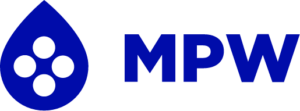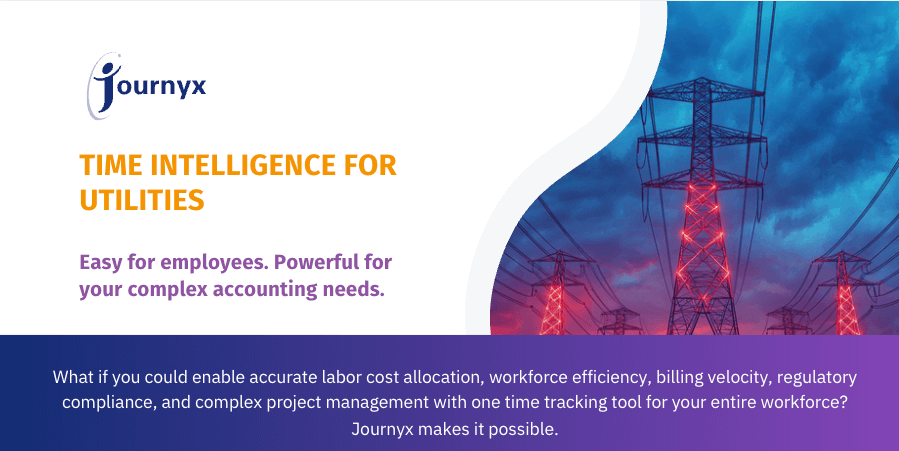How Utilities Can Improve Project Cost Recovery with Better Labor Tracking
Introduction
Utility companies are under increasing financial pressure. Fuel costs are volatile, infrastructure is aging, regulations are evolving, and climate change is intensifying the frequency and severity of weather events. In this environment, utilities must stretch every dollar — yet raising rates is politically and publicly challenging.
One often-overlooked lever for improving financial performance lies in the details: accurate, granular labor tracking. Time and labor data, when captured precisely and aligned with projects, grants, or internal codes, can dramatically improve cost recovery, billing accuracy, and audit defense.
Why Labor Costs Are a Big Deal in Utilities
Labor is not just a line item — it’s often one of the largest costs in utility operations. According to the U.S. Bureau of Labor Statistics, wages and benefits account for 50% or more of operating expenses in many public utilities.
This is especially true for:
- Project-based work, where labor must be accurately allocated for reimbursement or cost sharing.
- O&M activities, where visibility into labor patterns supports efficiency gains.
- Disaster response and recovery, where labor documentation is essential for FEMA or other agency reimbursement.
Without detailed time tracking, labor costs go undocumented — and unrecovered.
Common Labor Tracking Gaps in Utility Operations
Most utility organizations weren’t designed around granular labor tracking. As a result, common pain points include:
- Paper-based time sheets that get lost, misfiled, or delayed.
- Manual spreadsheets disconnected from work order or financial systems.
- Field crews unable or unwilling to log time in the moment — leading to inaccuracies or “guesstimates.”
- Delayed supervisor approvals, causing missed deadlines for grant or project reimbursement.
- Inconsistent project coding, undermining cost allocation and audit defensibility.
These gaps don’t just create operational inefficiencies — they create lost revenue opportunities.
How Better Labor Tracking Improves Cost Recovery
When utilities modernize their time tracking processes, the payoff is immediate and measurable:
- Documented labor for reimbursement: Especially critical for FEMA-eligible work or multi-agency-funded projects.
- Timely billing: Automated labor reporting supports faster, more accurate billing to joint project participants or outside agencies.
- Mid-project corrections: With better data, utilities can spot labor overages early and adjust staffing before budgets are blown.
- Stronger audit defense: A well-documented labor history can mean the difference between full reimbursement and lost revenue due to technical non-compliance.
In short, better labor tracking = better cost recovery.
Features to Look for in Time Tracking for Utilities
Not all time tracking solutions are built for utility work. To succeed in this space, a platform must be:
- Easy to use: So both office staff and field crews can easily log their time
- Mobile-friendly: So field crews can log time anywhere, even offline.
- Context-aware: Leverage calendars, job codes, or GPS to reduce manual entry.
- Project- and task-coded: To enable reimbursement, billing, or internal allocation.
- Supervisor-friendly: Streamlined approvals, exceptions, and edits.
- Integrated: Seamlessly connect with your work order system, ERP, and payroll software.
- Audit-ready: Time-stamped logs, edit histories, and exportable reports.
Case Studies
Muscatine Power and Water: Transitioned from a manual system to digital time tracking. The change improved operations and saved the hours equal to one full-time employee, so they could focus on more productive projects.
Kissimmee Utility Authority: Modernized its time collection system to include a customized approval process, elimination of manual spreadsheet challenges, and synchronizing with their ERP.
Closing Thoughts
In utility operations, every untracked labor hour is a dollar unrecovered — and in today’s financial climate, those dollars matter.
Modernizing labor tracking is one of the most cost-effective ways utilities can improve cost recovery, ensure audit readiness, and ultimately protect margins.
Next Steps
Journyx was designed for granular, project or job-based labor, expense, and equipment tracking. Ready to start?
- Download our free guide: The Ultimate Buyer’s Guide to Time Tracking Solutions and discover how to choose the right platform for your utility’s needs
- Learn more about Journyx Project Time Tracking
Or, want to jump in and see what Journyx can do for your organization?
Labor intensive business? Manage cost allocation and budget control, regulatory compliance audits, field management, workforce optimization, along with risk management and response with time tracking from Journyx.





